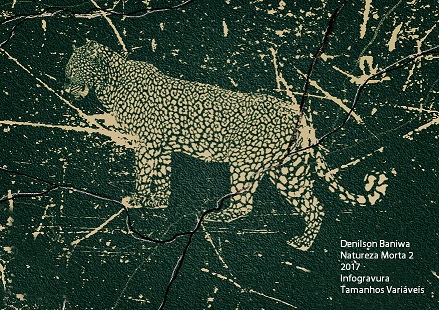Le traiettorie del fervore: cavalli e geometrie non-umane nel Palio di Ronciglione
DOI:
https://doi.org/10.54103/2035-7680/16803Keywords:
Palio of Ronciglione; breeding; thoroughbred horse; multispecies ethnography; intentionalityAbstract
The Palio of Ronciglione has a centuries-old tradition, but what makes it truly unique is the absence of any jockey. When the canape falls, each horse chooses whether to compete with the others, to tag along or simply not to run, depending on different temperaments. In the context of the Palio, the horse represents a co-producer of cultural processes, which also transmits its experience to the younger specimens; this latter aspect is particularly evident in the trajectories chosen during the race, based on an indisputable non-human subjectivity. A first ‘internal’ form of inscription to the species should be noted: racehorses are the result of centuries-old domestication combined with a controlled genetic selection (breeding), which has gradually entangled Equus ferus caballus in human society. A second ‘external’ aspect concerns the racetrack, an environment of inter-species coexistence: created by the human community, it is crossed and experienced by horses, which engrave the urban tissue with their trajectories. The animal’s agency, therefore, emerges through the creative adaptation to the path, an inscription of non-human geometries in this space. The intentionality of the horse is what establishes the performance of the Palio: it may seem paradoxical, but the conservation of this cultural heritage is possible as long as the horse can choose not to run.
Metrics
References
Anthony, David W. “The ‘Kurgan Culture’, Indo-European Origins, and the Domestication of the Horse: A Reconsideration.” Current Anthropology, vol. 27, no. 4, 1986, pp. 291-313.
Bell, Richard J.W., et al. “Equine gastric ulcer syndrome in adult horses: A review.” New Zealand Veterinary Journal, vol. 55, no. 1, 2007, pp. 1-12.
Berry, Bonnie. “Interactionism and animal aesthetics: A theory of reflected social power.” Society & Animals, vol. 6, no. 1, 2008, pp. 75-89.
Borneman, John. “Race, Ethnicity, Species, Breed: Totemism and Horse-Breed Classification in America.” Comparative Studies in Society and History, vol. 30, no. 1, 1988, pp. 25-51.
Bower, Mim A., et al. “The cosmopolitan maternal heritage of the Thoroughbred racehorse breed shows a significant contribution from British and Irish native mares.” Biology Letters, vol. 7, no. 2, 2011, pp. 316-320.
Brandt, Keri. 2006. “Intelligent bodies: embodied subjectivity human–horse communication.” Body/embodiment. Symbolic interaction and the sociology of the body, edited by Dennis Waskul and Phillip Vannini, Ashgate, 2006, pp.141-53.
Caillois, Roger. I giochi e gli uomini. Bompiani, 1994.
Carabelli, Gaetano. Dei Farnesi e del Ducato di Castro e Ronciglione, dalla storia inedita di Ronciglione del canonico Gaetano Carabelli. Felice Le Monnier, 1865.
Cassidy, Rebecca. The Sport of Kings: Kinship, Class and Thoroughbred breeding in Newmarket. Cambridge University Press, 2002.
---. “Turf Wars: Arab Dimensions to British Racehorse Breeding.” Anthropology Today, vol. 19, no. 3, 2003, pp. 13-18.
Coulter, Kendra. “Herds and Hierarchies: Class, Nature, and the Social Construction of Horses in Equestrian Culture.” Society & Animals, vol. 22, no. 2, 2014, pp. 135-152.
Derry, Margaret. Bred for Perfection: Shorthorn Cattle, Collies, and Arabian Horses since 1800. Johns Hopkins University Press, 2003.
Fabbri, Flaviano F., e Bruno Pastorelli. Ronciglione. Le corse a vuoto. Grafica 2000, 1999.
Foucault, Michel. Naissance de la biopolitique. Cours au Collège de France (1978-1979). Gallimard, 2004.
Franco, Cristina. “Animali e identità sociali. Il Palio di Siena e il ‘totemismo’ delle contrade.” Lares, vol. 74, no. 1, 2008, pp. 101-120.
Goodall, Daphne M. A History of Horse Breeding. Hale, 1977.
GU n.210, 09/09/11. Ministero della Salute, Ordinanza del 21 luglio 2011, n. 210, “Disciplina di manifestazioni popolari pubbliche o private nelle quali vengono impiegati equidi, al di fuori degli impianti e dei percorsi ufficialmente autorizzati”.
GU n.209, 07/09/16. Ministero della Salute, Ordinanza del 3 agosto 2016, n. 209, “Proroga e modifica dell'ordinanza contingibile e urgente 21 luglio 2011 e successive modificazioni, in materia di disciplina delle manifestazioni popolari pubbliche o private nelle quali vengono impiegati equidi al di fuori degli impianti e dei percorsi ufficialmente autorizzati”.
GU n.200, 28/08/17. Ministero della Salute, Ordinanza del 1 agosto 2017, n. 200, “Proroga e modifica dell’ordinanza contingibile e urgente 21 luglio 2011 e successive modificazioni, in materia di disciplina delle manifestazioni popolari, pubbliche o private, nelle quali vengono impiegati equidi al di fuori degli impianti e dei percorsi ufficialmente autorizzati”.
Haraway, Donna J. When Species Meet. University of Minnesota Press, 2008.
Heck, Heinz. “The Breeding-Back of the Tarpan.” Oryx, vol. 1, no. 7, 1952, pp. 338-342.
Ingold, Tim. “On Reindeer and Men.” Man, vol. 9, no. 4, 1974, pp. 523-538.
Karlsson, Helena. Athenaarabians.com, http://www.athenaarabians.com. Consultato il 03 ott. 2021.
Kirksey, S. Eben, e Stefan Helmreich. “The Emergence of Multispecies Ethnography.” Cultural Anthropology, vol. 25, no. 4, 2010, pp. 545-687.
Lévi-Strauss, Claude. Il totemismo oggi. Et al, 2010.
Marchesini, Roberto, e Sabrina Tonutti. Manuale di zooantropologia. Meltemi, 2002.
Marvin, Garry, e Susan McHugh (a cura di). Human–animal studies. Routledge, 2018.
Maurstad, et al. “Co-being and Intra-action in Horsehuman Relationships: A Multi-species Ethnography of Be(com)ing Human and Be(com)ing Horse.” Social Anthropology, vol. 21, no. 3, 2013, pp. 322-335.
MIPAF. Banca Dati degli Equidi, https://www.sian.it/pubbbde/start.do. Consultato il 03 ott. 2021.
Mullin, Molly. “Mirrors and windows: Sociocultural studies of human-animal relationships.” Annual Review of Anthropology, vol. 28, no. 1, 1999, pp. 201-224.
Nosari, Galeazzo, e Franco Canova. Il Palio nel Rinascimento: i cavalli di razza dei Gonzaga nell’età di Francesco II Gonzaga 1484-1519. Lui, 2003.
Pedigree Online. Thoroughbred Database, https://www.pedigreequery.com/. Consultato il 03 ott. 2021.
Roman, Steven A. Dosage: Pedigree & Performance. The Russell Meerdink Company, 2002.
Serangeli, Papirio. Polygraphia Roncilionensium. Spada, 2004.
Tesio, Federico. Il purosangue: animale da esperimento. Hoepli, 1984.
Downloads
Published
How to Cite
Issue
Section
License

This work is licensed under a Creative Commons Attribution-NonCommercial-NoDerivatives 3.0 Unported License.




